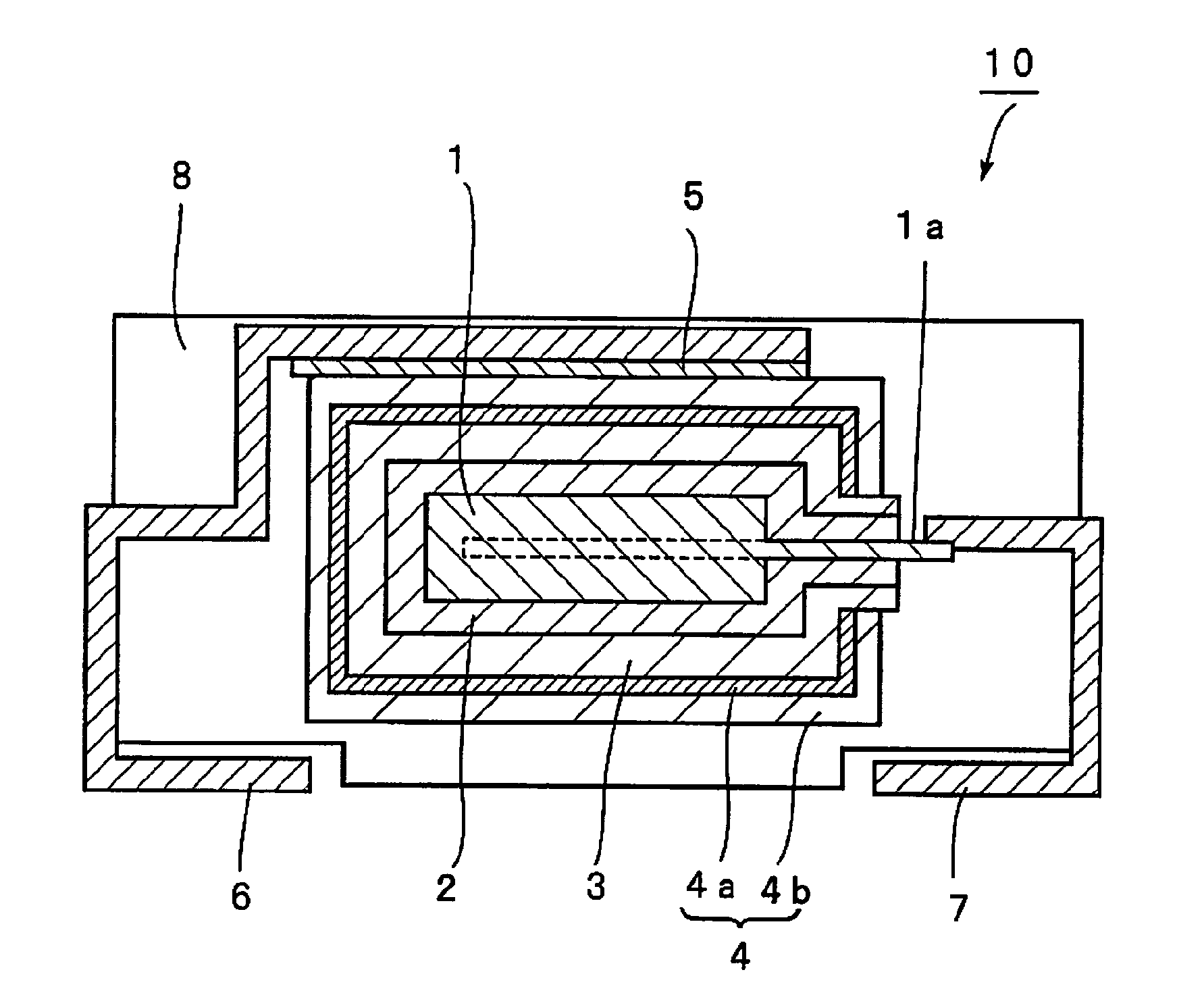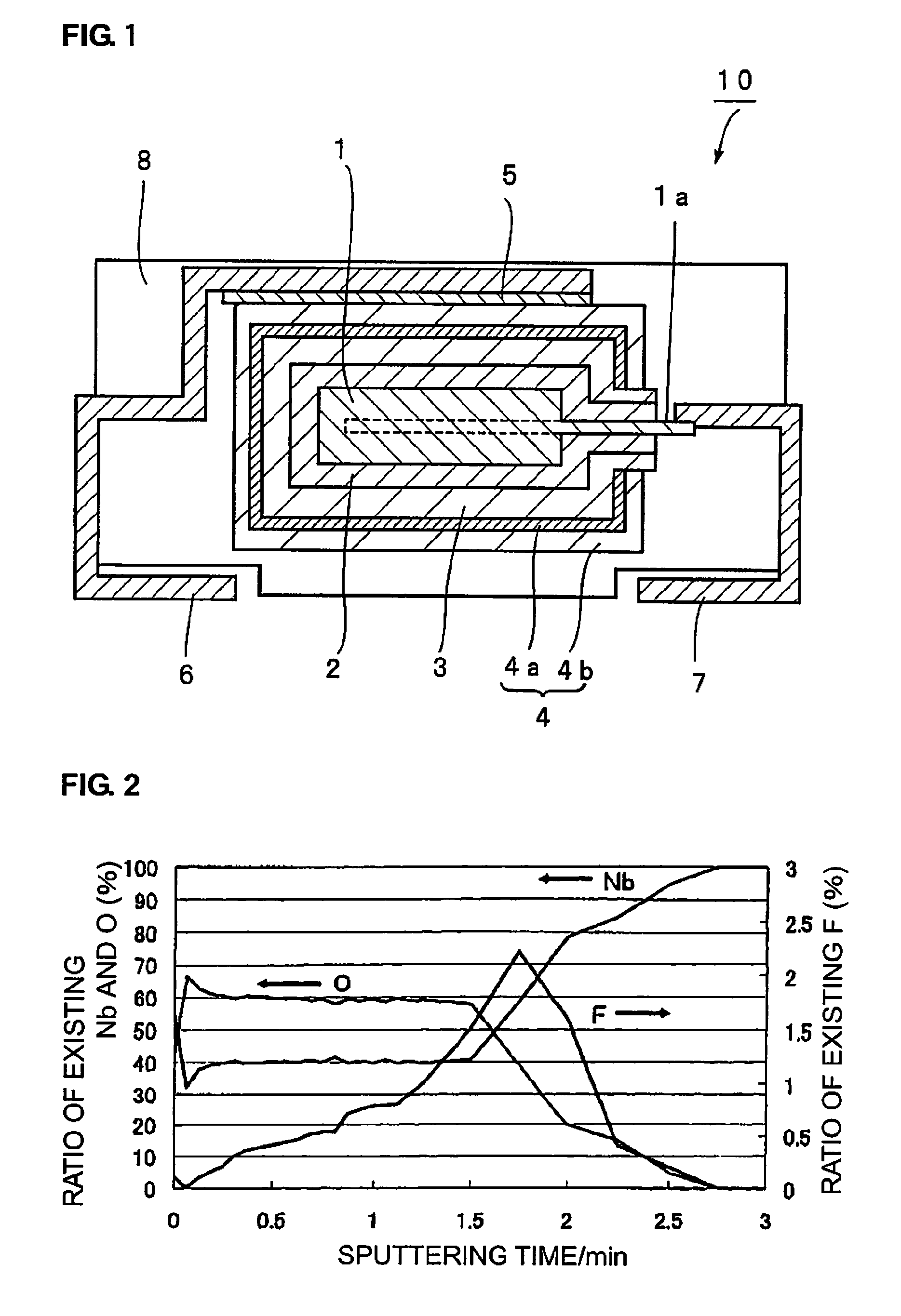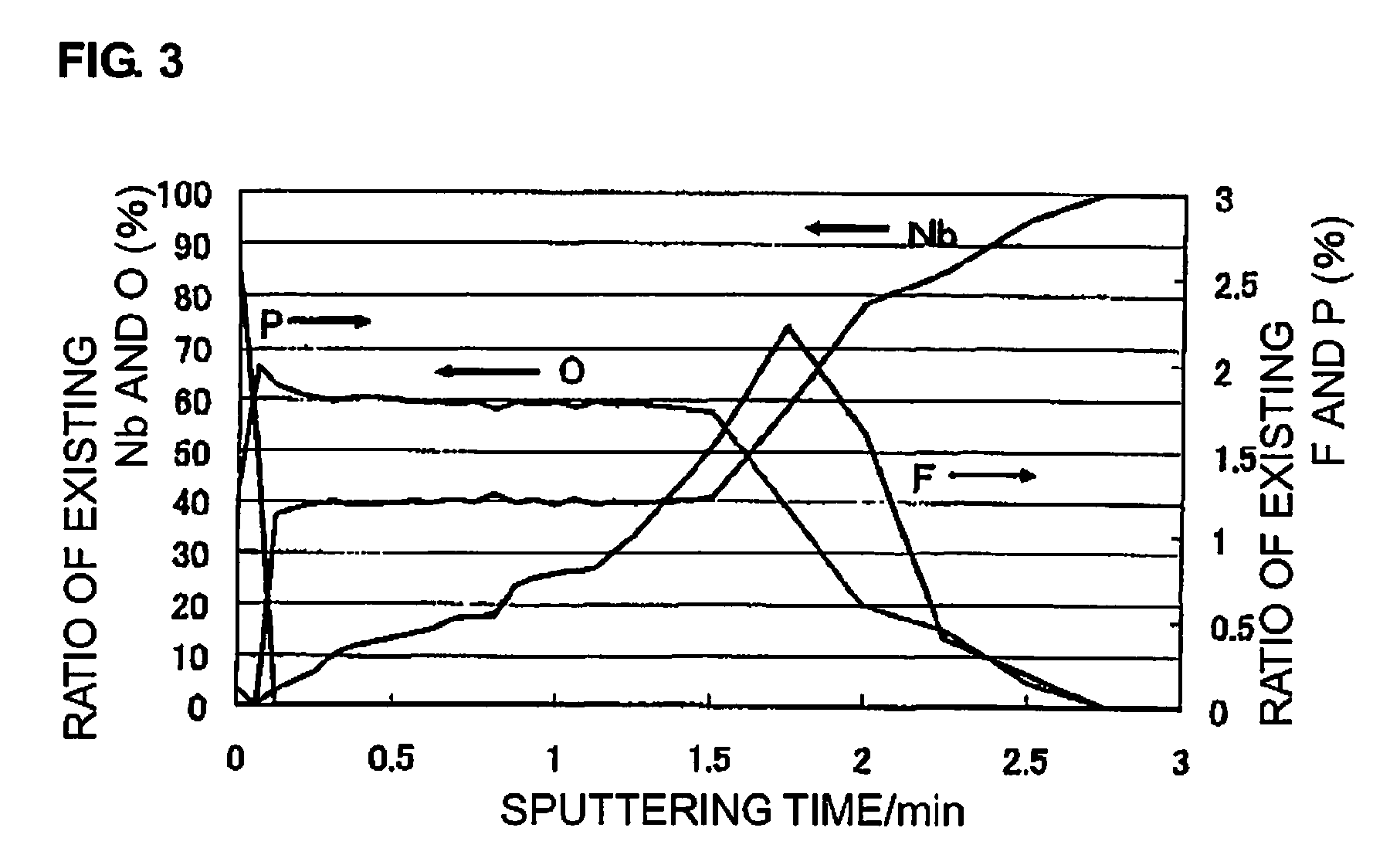Niobium solid electrolytic capacitor and its production method
a solid electrolytic capacitor and niobium technology, applied in the manufacture of electrolytic capacitors, capacitor details, capacitor dielectric layers, etc., can solve the problems of reducing capacitance and exposure to high heat in the flow process, and achieve the effect of reducing the leakage current, increasing the capacity retentiveness before and after heat treatment, and reducing the exposur
- Summary
- Abstract
- Description
- Claims
- Application Information
AI Technical Summary
Benefits of technology
Problems solved by technology
Method used
Image
Examples
example 1
Step 1:
[0047]First, a niobium powder of such that the product of the capacity of the sintered niobium body after electrolytic oxide film formation and the electrolytic voltage thereof, CV is 150,000 [μF·V / g], was mixed with a niobium monoxide powder. The blend ratio was such that the content of the niobium monoxide powder could be 20% by weight of the overall mass of the anode.
[0048]Unless otherwise specifically indicated in the following description, the CV value in Examples and Comparative Examples is 150,000 [μF·V / g]. The CV value in the invention is one measured according to the Standard of Electronic Industries Association of Japan, EIAJ RC-2361A. In the measurement, the test liquid was a 30 wt. % sulfuric acid solution; and the test frequency was 120 Hz. The overlapping of the bias voltage was omitted.
Step 2:
[0049]The mixture of niobium powder and niobium monoxide powder prepared in the step 1 was sintered at about 1200° C. to form an anode 1 of a sintered porous body. The ano...
example 2
[0057]In the step 2 in Example 1, the anodic oxidation with an aqueous ammonium fluoride solution was followed by additional anodic oxidation with an aqueous 0.1 wt. % phosphoric acid solution at 40° C. for 2 hours to form a dielectric layer. The composition of the formed dielectric layer was analyzed through XPS.
[0058]FIG. 3 is a graph showing the data of XPS analysis of the composition of the dielectric layer.
[0059]In FIG. 3, the horizontal axis indicates a sputtering time (min), corresponding to the thickness in the depth direction of the dielectric layer. The vertical axis on the left side indicates a ratio of existing Nb and O (%); and the vertical axis on the right side indicates a ratio of existing F and P (%).
[0060]As in FIG. 3, phosphorus (P) exists in the surface and around it of the dielectric layer. P is shifted on the cathode side. When the range in which the O (oxygen) concentration reaches 10% of the peak thereof is defined as the thickness of the dielectric layer, th...
example 3
[0074]A solid electrolytic capacitor A3 was produced in the same manner as in Example 1, for which, however, the blend ratio of the niobium monoxide powder in the mixture of niobium powder and niobium monoxide powder was changed to 5% by weight.
PUM
| Property | Measurement | Unit |
|---|---|---|
| temperature | aaaaa | aaaaa |
| temperature | aaaaa | aaaaa |
| temperature | aaaaa | aaaaa |
Abstract
Description
Claims
Application Information
 Login to View More
Login to View More - R&D
- Intellectual Property
- Life Sciences
- Materials
- Tech Scout
- Unparalleled Data Quality
- Higher Quality Content
- 60% Fewer Hallucinations
Browse by: Latest US Patents, China's latest patents, Technical Efficacy Thesaurus, Application Domain, Technology Topic, Popular Technical Reports.
© 2025 PatSnap. All rights reserved.Legal|Privacy policy|Modern Slavery Act Transparency Statement|Sitemap|About US| Contact US: help@patsnap.com



